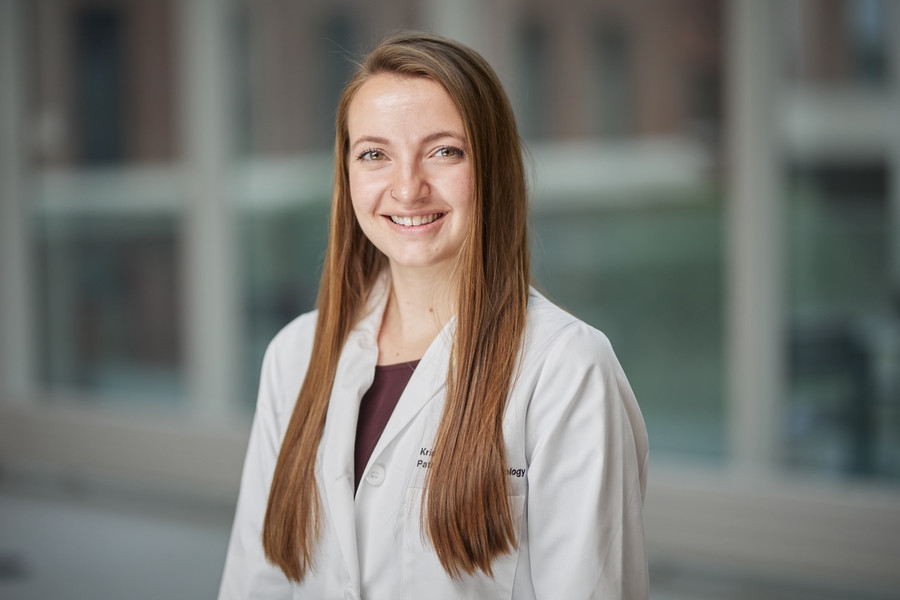Some people bent on causing harm to themselves or others take insulin in a behavior known as factitious hypoglycemia. Medical professionals have developed tests to help uncover this, but a new area of concern has emerged: the use of insulin meant for pets.
Kristina Sevcik, MD, a second-year anatomic and clinical pathology resident in UNMC’s Department of Pathology, Microbiology and Immunology, and her faculty mentor, Ria C. Fyffe-Freil, PhD, are studying ways to detect pet insulin in human patients. It’s cheaper and easier to obtain pet insulin, making it ripe for abuse. That’s why their study of the effectiveness of three different immunoassay platforms and their four different assay formulations is so important, Dr. Sevcik said.
Her study is made possible by the department’s Research Grant Awards, created in 2024. The awards provide up to $10,000 in research funding to residents and fellows. The aim of this program is to advance the experience and mentorship in clinical and translational research.
“We’re trying to contribute to that aspect of the literature—if someone has access to these medications, what would that look like on our labs? How can we work that up? The different detection systems all pick things up differently,” Dr. Sevcik said.
She said their study involves spiking normal serum samples collected at UNMC with two of the most common pet insulins in varying concentrations. The samples will be analyzed in-house and then sent to two external labs that employ different chemical assay systems.
“We’re trying to characterize how these different systems pick up different types of insulin and create a profile,” she said. “So if you have a concern someday that this patient’s hypoglycemia isn’t making sense, where can we send these samples to see if there’s inconsistencies that follow the pattern we’re detecting?”
Dr. Fyffe-Freil said that analytically, it can be a challenge to detect different forms of synthetic and/or natural insulin derivatives.
“In both forensic and overdose settings, it is crucial to identify the origins of any elevated insulin concentrations,” she said. “I have experience with several cases of just this: a patient with critically high insulin levels in their blood with no apparent source. Once insulin-secreting tumors are ruled out, then it becomes an episode of Forensic Files: scrambling to identify the source to prevent further harm.
“Not all clinical insulin assays are created equal, either—each one exhibits different specificities for the different insulin analogs, so often it becomes a process of elimination by running the patient’s sample on multiple assays to narrow down the type of insulin,” Dr. Fyffe-Freil said. “Dr. Sevcik’s work will fill an important gap in the literature, serving to guide laboratorians through this challenging analysis in the future.”
